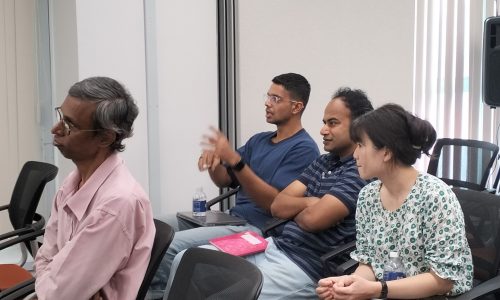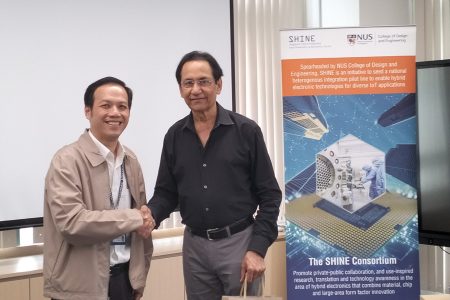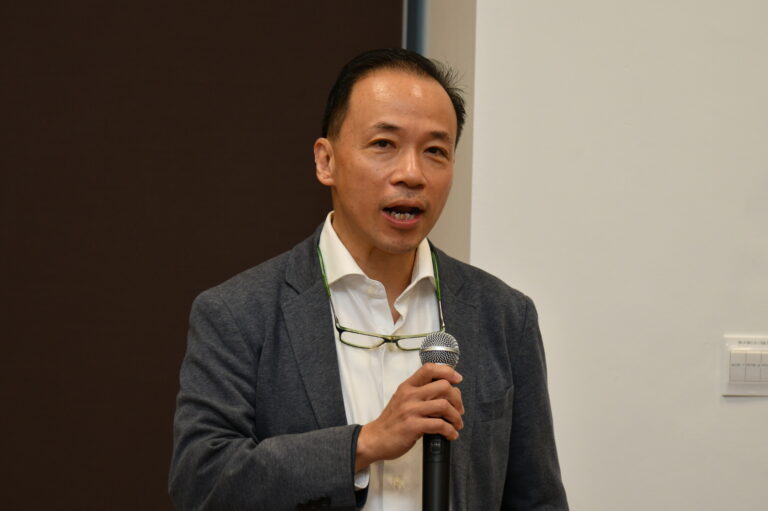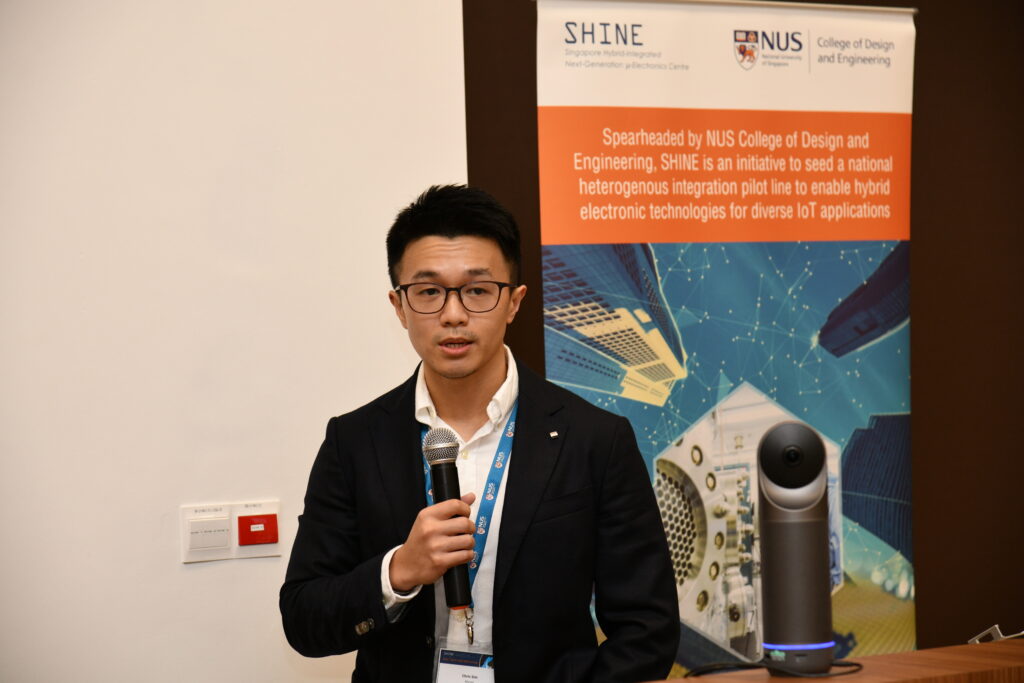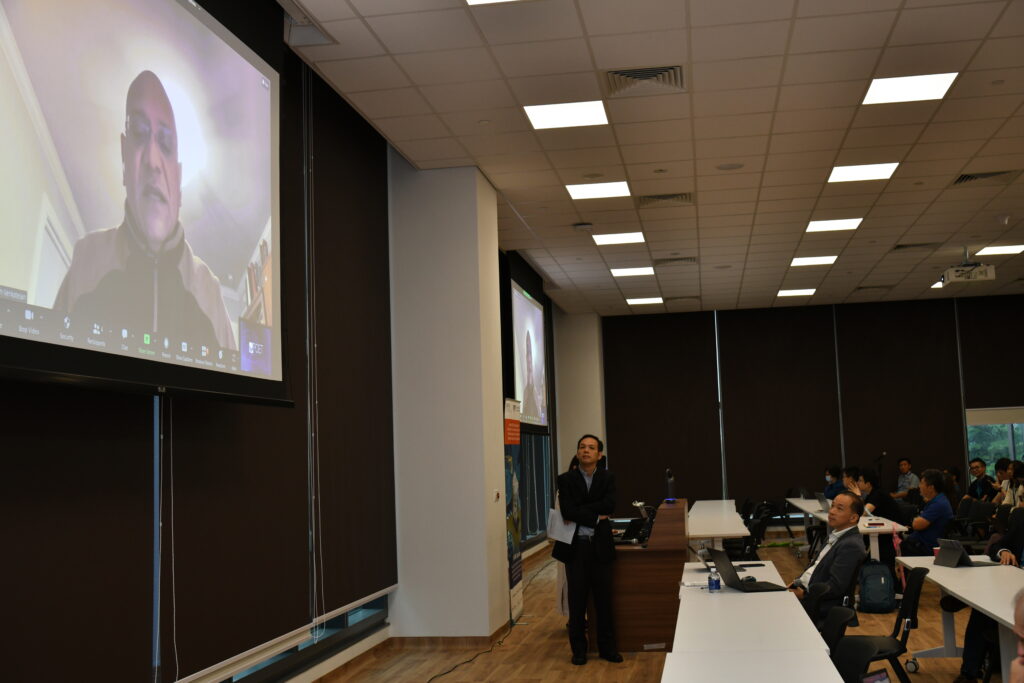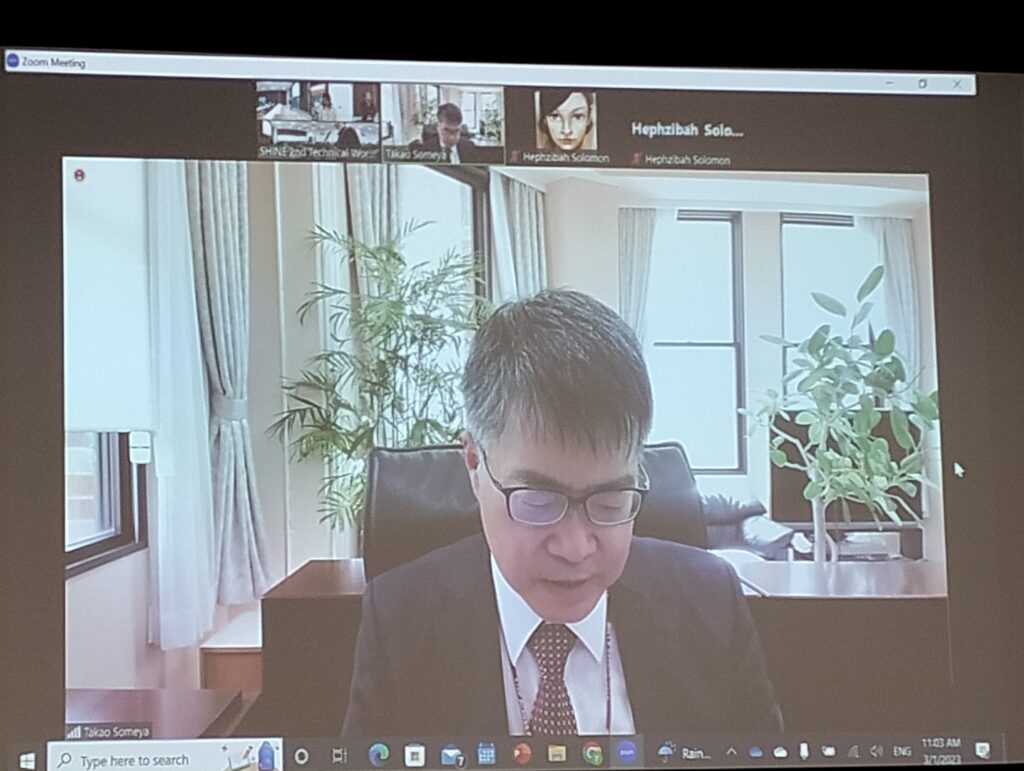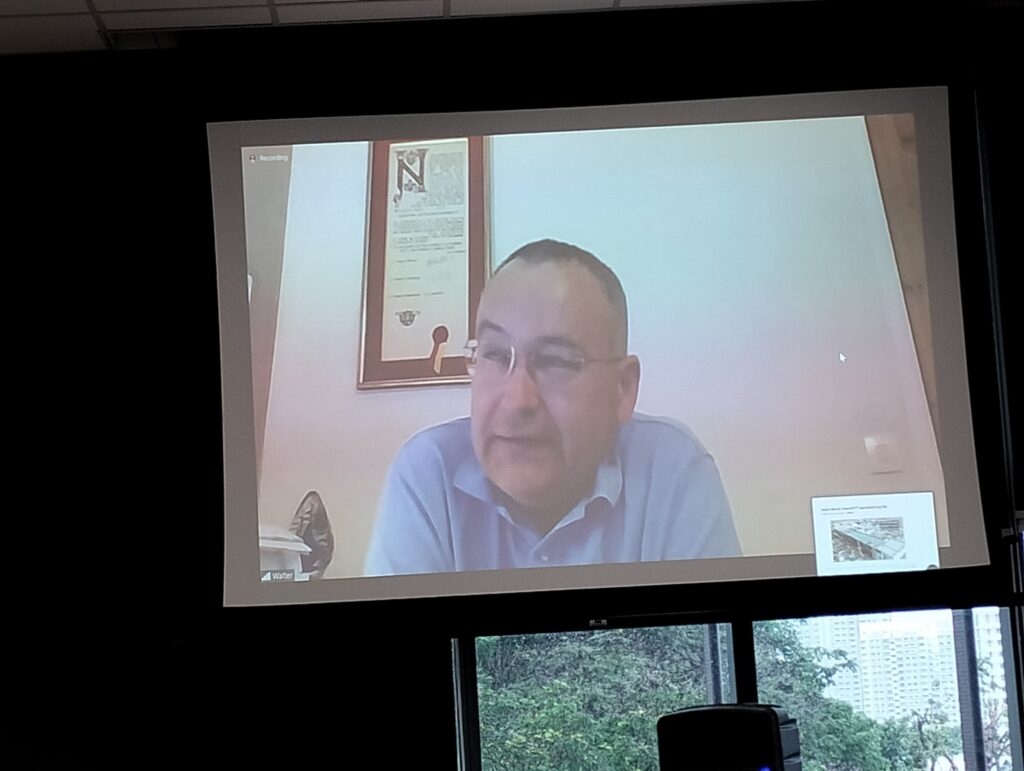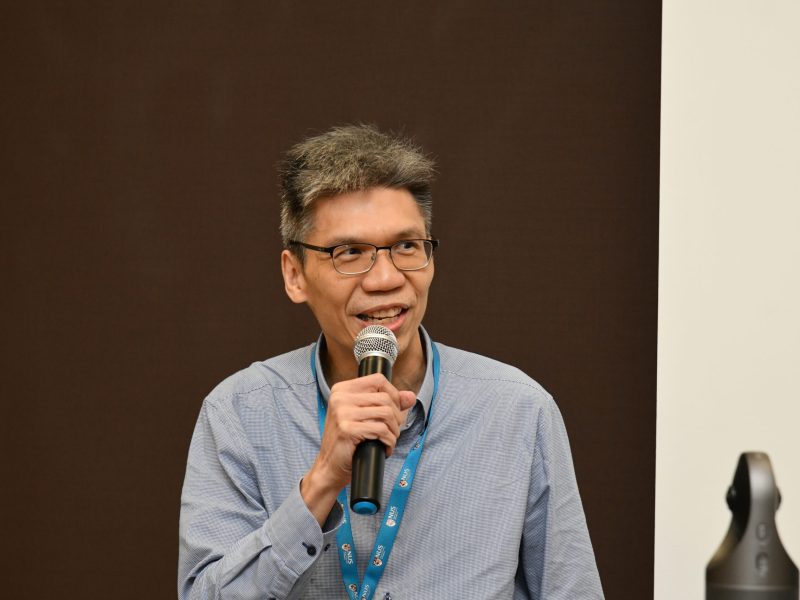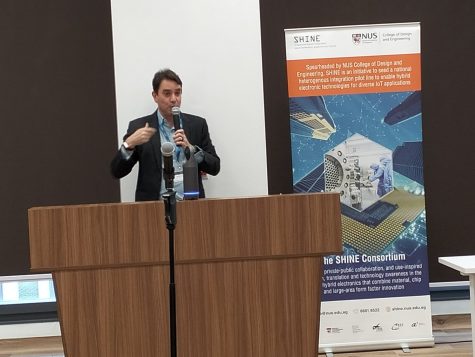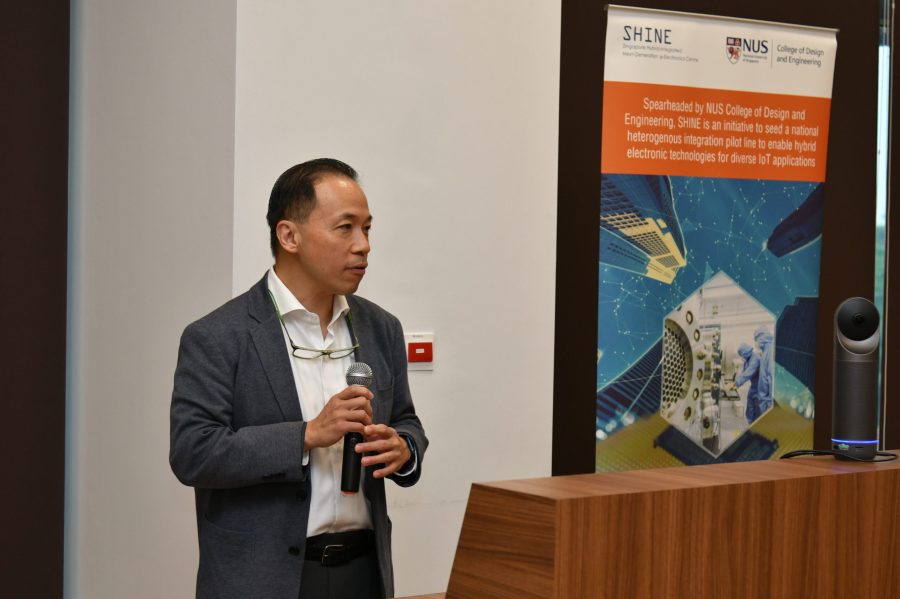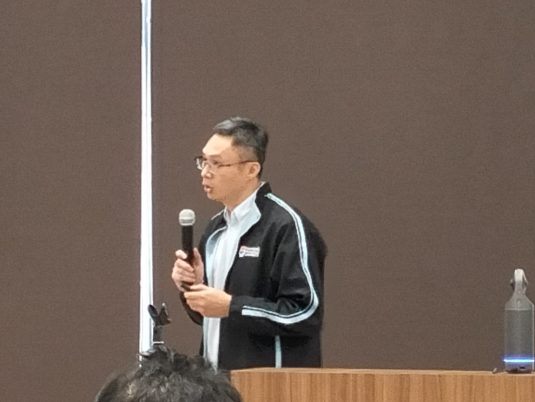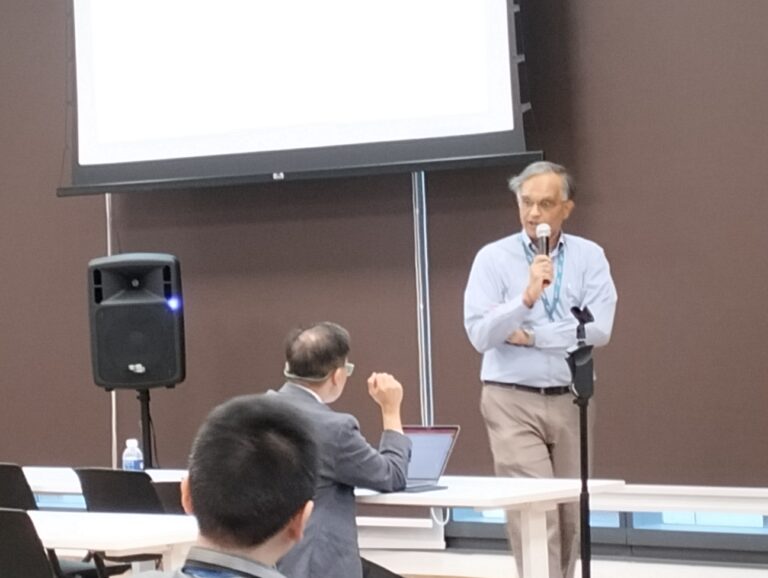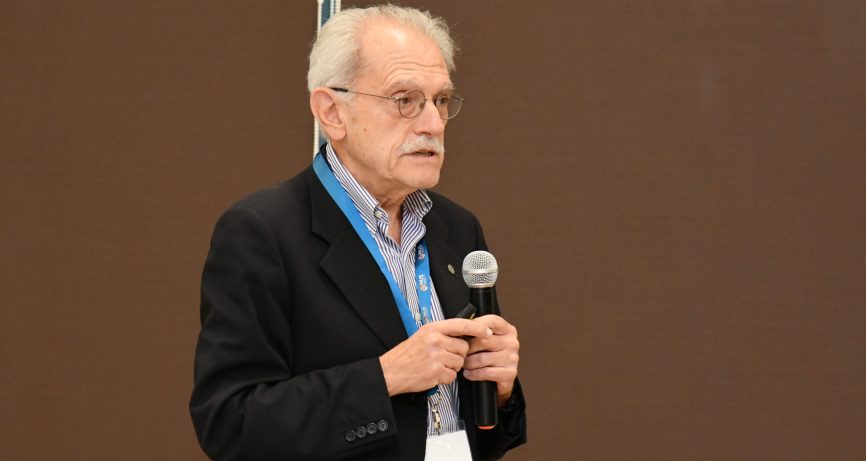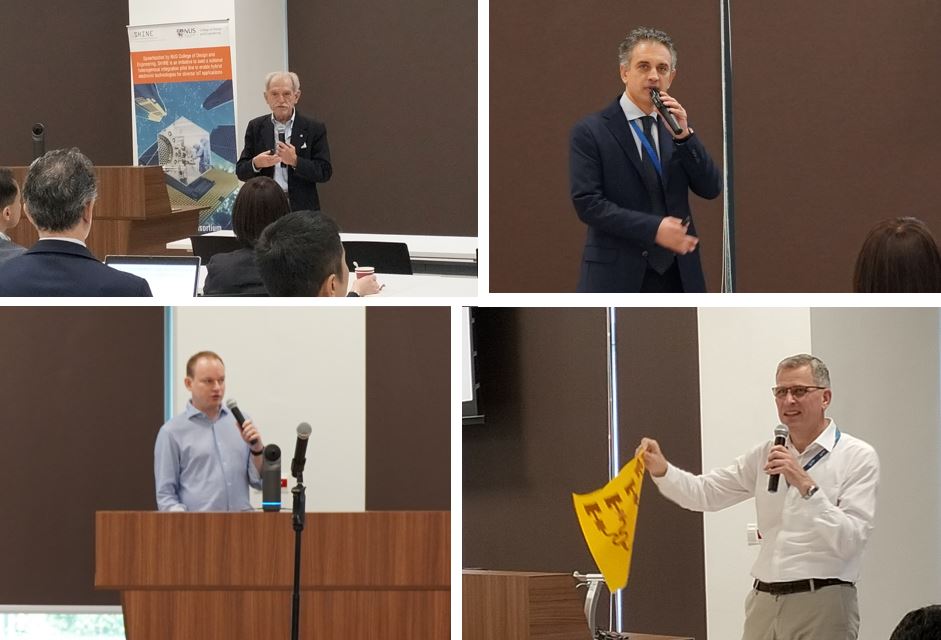Post Event Report
The third technical workshop of the Singapore Hybrid-Integrated Next-Generation μ-Electronics (SHINE) Centre was held on 13 September 2023 at Block E7 in the NUS College of Design and Engineering Campus. The event was a one-day seminar that included a series of invited talks from industries, reporting on research outcome of four research thrusts by co-investigators and researchers from NUS, NTU, DSO and A*Star. The seminar focused on promoting groundbreaking material discoveries aimed at shaping the future of semiconductor and heterogenous-integration technology while nurturing innovation and encouraging collaboration within the industry. The morning event was open to the public and attended by professors, staff, researchers, and industry collaborators, garnering close to 160 participants.
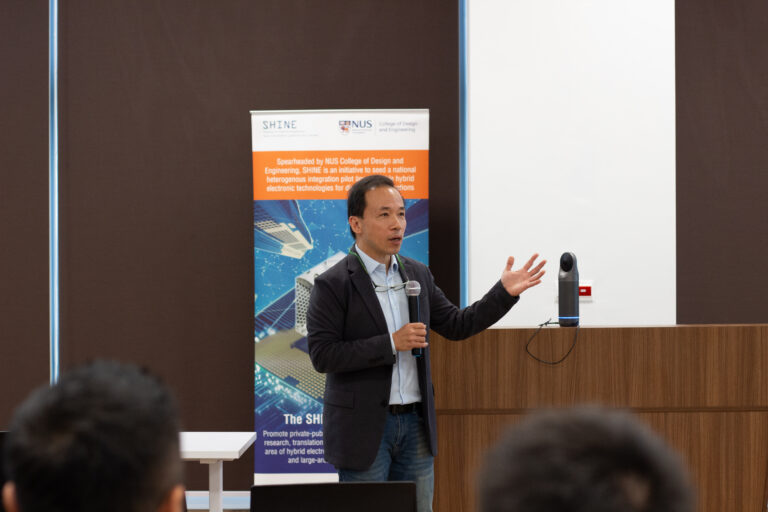
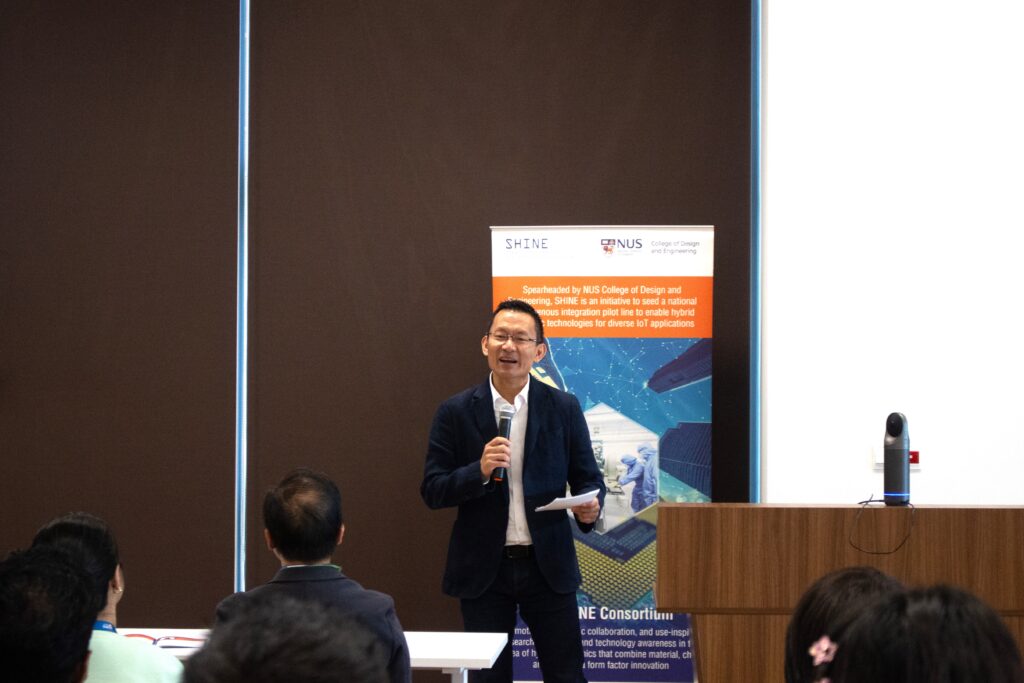
The welcome address by Prof Aaron Thean, Director of SHINE, began with an appreciation of participants and guests, Chief Executive Officer, NRF, including partners of SHINE, for gracing today’s event. He outlined the motivation behind establishing the SHINE Centre and its belief in research strategies with a convergence of new material innovations and collaborations in the research ecosystem.
The inspiring opening address by Mr Beh, Chief Executive Officer, NRF, set the tone for a day filled with profound knowledge-sharing and collaboration. Mr. Beh eloquently emphasized the far-reaching significance of this innovation economy, underscored the impact of electronics in shaping the trajectory of our world, Research Innovation and Enterprise’s (RIE) pivotal role in providing resources to push frontier science and innovation and the importance of leadership in serving our society.
Followed on were the plenary talks by three distinguished speakers from the industry, namely Professor Radha Nagarajan, Dr Barund Dutta and Dr Myung-Hee Na.
Our journey through innovation and technological advancement began with the first invited speaker, Professor Radha Nagarajan, Senior VP and CTO of the Optical and Copper Connectivity Group at Marvell. Prof. Nagarajan’s captivating talk on “2.5D/3D Heterogeneous Optical Integration” explored the merger of electronics and optics into a single active silicon photonics interposer to form a higher-level component. The process facilitates the component fusion independently designed and optimized from several technology and foundry platforms into a common interposer. As demonstrated, heterogeneous integration is paramount for achieving higher-speed and higher-performance components in our rapidly evolving digital landscape.
At the end of Prof. Nagarajan’s presentation, Prof. Aaron Thean was thrilled to announce the Two Hundred Thousand Singapore dollar cash donation from Marvel. He thanked Prof. Nagarajan for the support and informed that the funds will play a vital role in advancing pioneering microelectronics research at the SHINE Centre.
Our second invited speaker, Dr Barund Dutta, Chief Scientist at Imec, presented a groundbreaking review of his work on developing a high-channel-count electrophysiology device, “Neuropixels probe.” Dr Dutta’s presentation illuminated the path towards another remarkable 10-50X increase in neural recording capacity, offering a glimpse into the ambitious goal of recording from the entire brain. He shared preliminary exploratory results of a specific neuro-modulation application and the transformative power of a CMOS-integrated platform capable of co-integrating various modalities, including integrated optics/photonics. Furthermore, Prof Dutta illustrated a few transformational neuroscience experiments to demonstrate that this technology is facilitating the Neuropixels ecosystem’s potential of charting a new path to enable collaborative science between advanced tool builders and scientists, with a transformational impact.
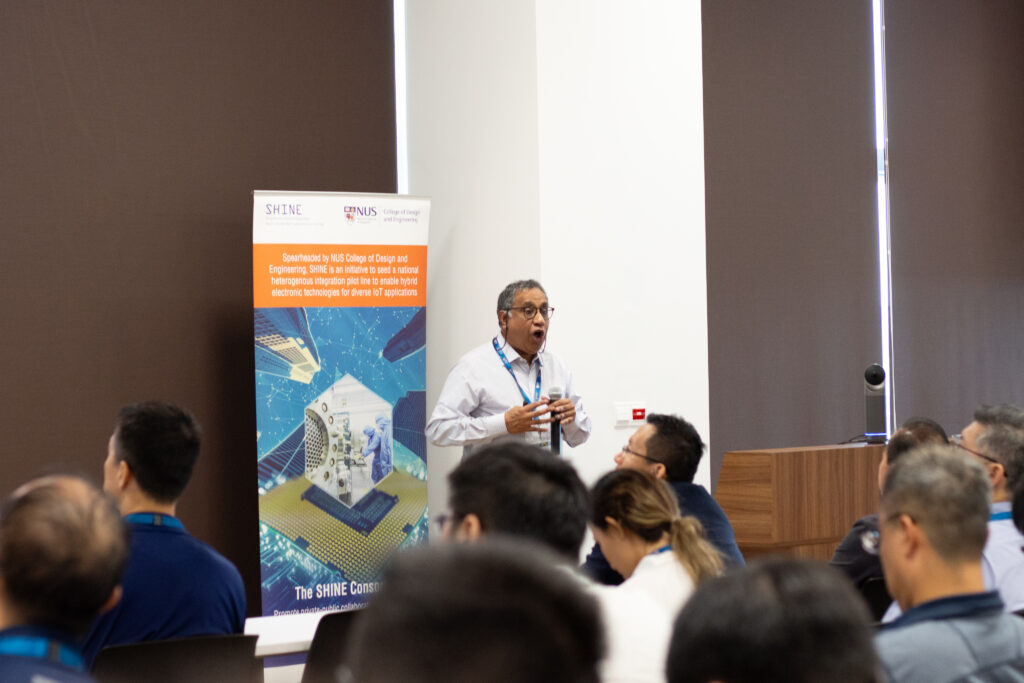
Dr. Myung-Hee Na, VP of the Revolutionary Technology Center at SK Hynix, was the final speaker at the morning workshop. Her presentation, “Making Small, Creating Big – Semiconductor Innovation,” took us through the “Continuity, Expansion, and Change” in memory innovation. This cycle emphasized the importance of memory innovation in today’s data-centric era. The discussion began with the need to continue Moore’s law in current memory products like DRAM and NAND, followed by expanding into emerging memory technologies for new applications. Dr Na introduced interfaces like Compute-Express-Link (CLX) and explored chalcogenide-based materials for improved performance and process simplicity, surpassing existing industry solutions. This journey ultimately aimed to break down the boundaries between computer and memory, leading to the concept of “Beyond Memory.”
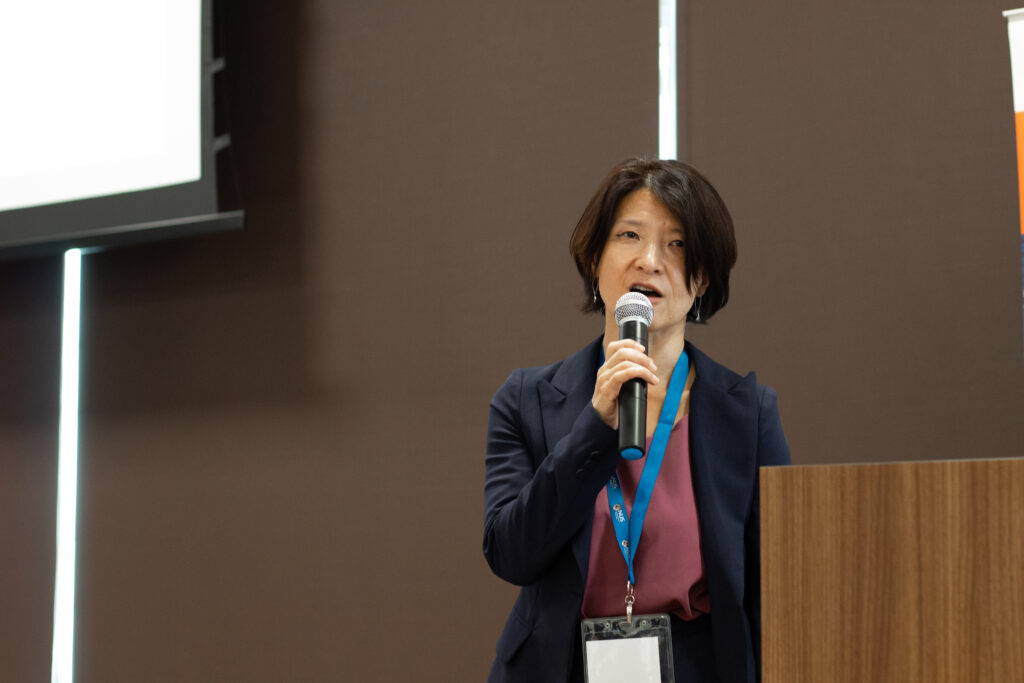
After the three plenary sessions, Prof Lim reiterated SHINE’s mission, strategy, approach, and benchmarking/positioning while providing an overview of its research activities and highlighting microelectronics innovation challenges and opportunities, its facilities and key capabilities, SHINE hybrid electronics research and empowering innovation through strategic partnership.
The SHINE 3rd Technical Workshop in the morning successfully concluded, thanks to the remarkable insights of our plenary speakers, dedicated participants, and the support of our sponsors and organizing committee. The event served as a forum for sharing knowledge, fostering collaboration, and building connections, pivotal in propelling the industry and promoting its development..
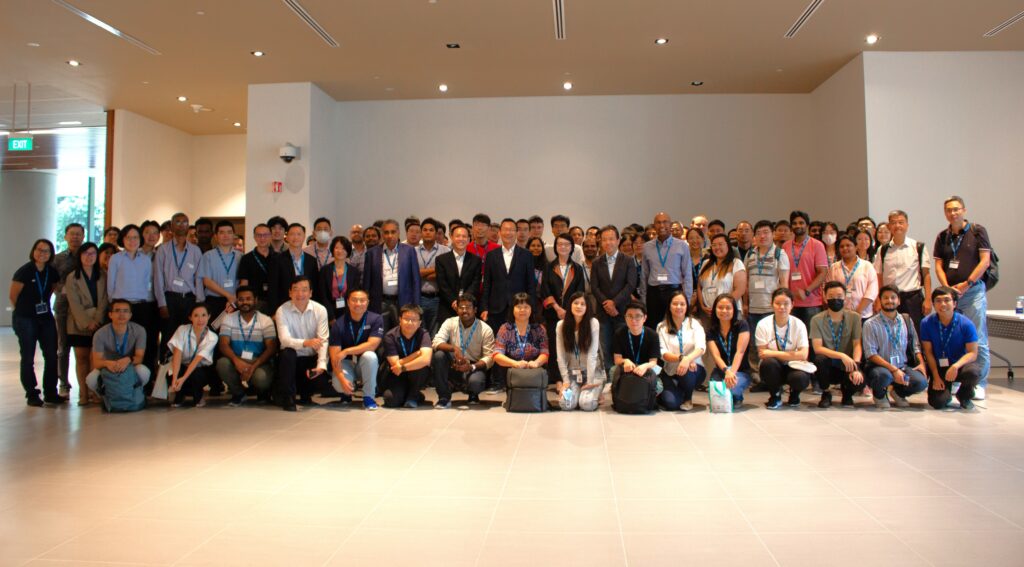
The afternoon workshop was restricted to SHINE consortium research collaborators. We extend a big thank you to all the co-investigators of SHINE research Thrusts 1 to 4 and the respective researchers for sharing their remarkable research outcomes.
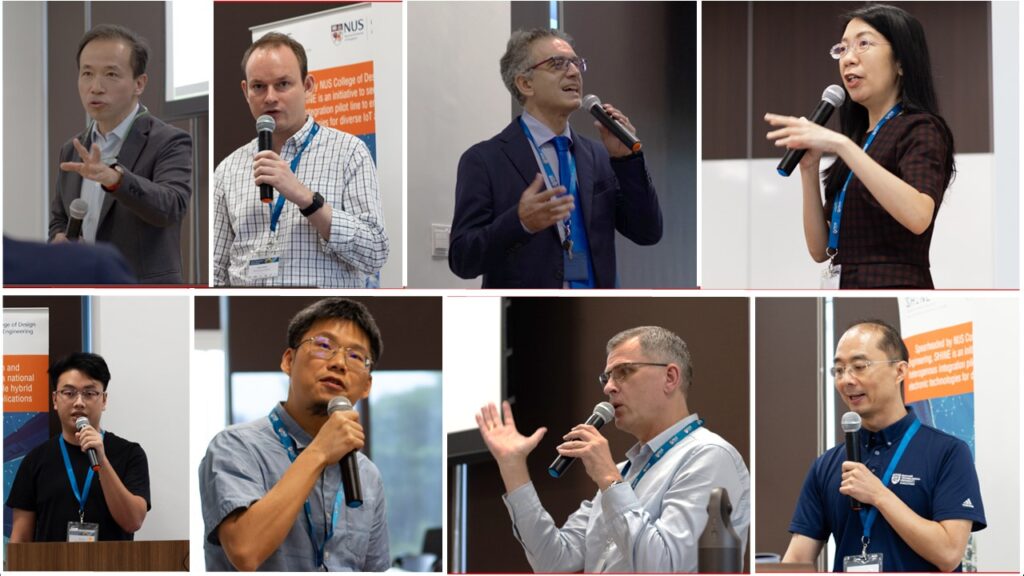
The Photo Gallery


